Slime Moulds, Small Fungi & Beautiful Sporophytes at Strumpshaw Fen — February 2024
Early stage Trichia decipiens sporangia on one of the logs at Basecamp.
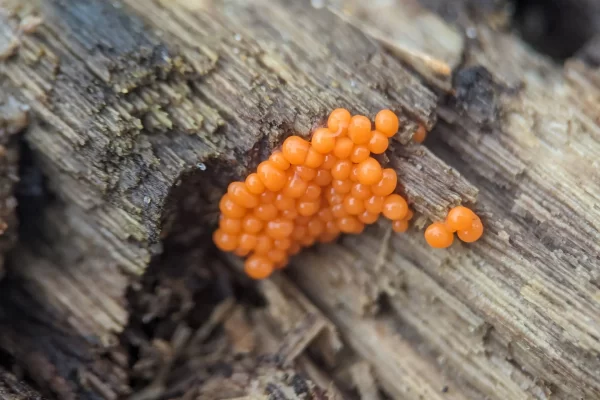
Strumpshaw Fen – 4th February 2024
After the Gnarly Oak, along the woodland trail near the bench at the end of the drainage channel, we found more Trichia.
The slime mould in the photo below could be Trichia decipiens as the sporangia are elongated with tapering stalks, dark at the bottom and lighter towards the sporangia — although they do look like they could also be Hemitrichia clavata.
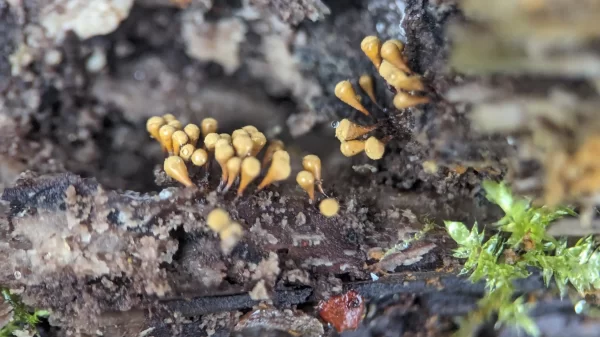
Strumpshaw Fen – 4th February 2024
The sporangia in the following photo do have a different form but could be at an earlier stage than the sporangia in the previous photo or it could be Trichia varia which is more obovoid and has shorter stalks.
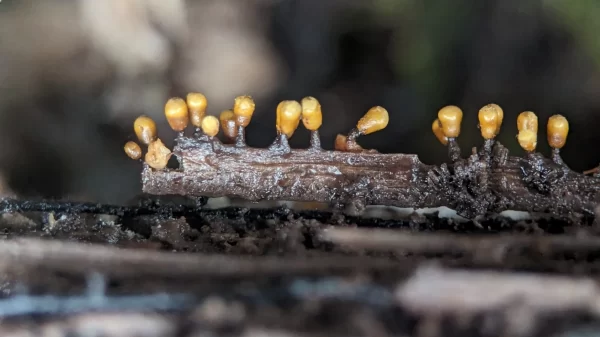
Strumpshaw Fen – 4th February 2024
The photo below shows open peridia of the sporangia revealing the capillitia and spores inside.
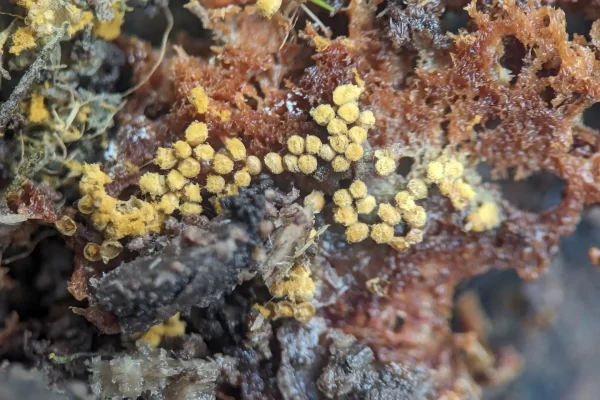
Strumpshaw Fen – 4th February 2024
Empty peridia in the following photo.
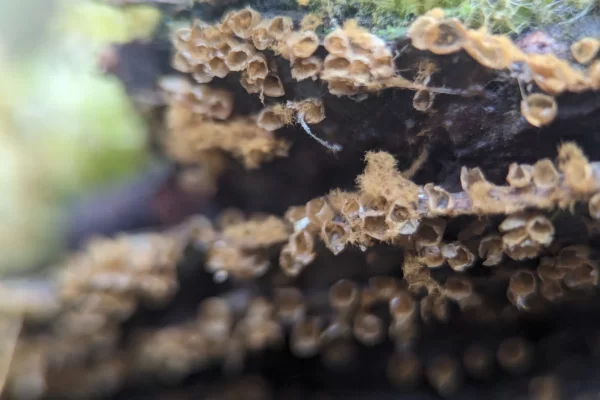
Strumpshaw Fen – 4th February 2024
Amongst the Trichia was some Arcyria denudata.
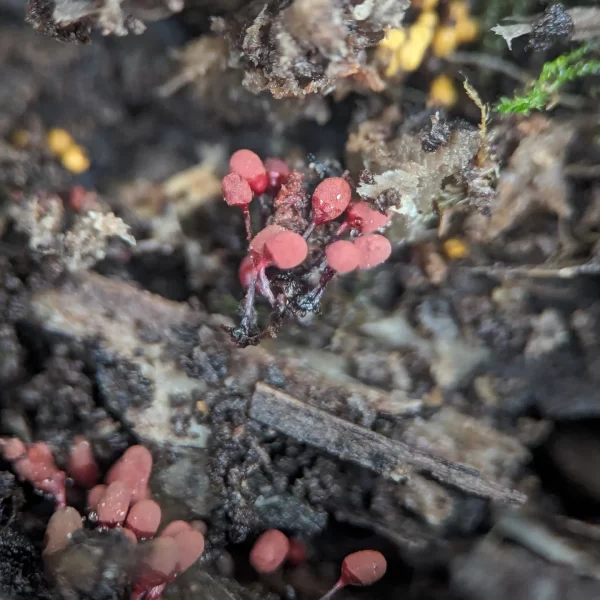
Strumpshaw Fen – 4th February 2024
Mid-month we spotted some exquisite Ceratiomyxa fruticulosa — coral slime mould.
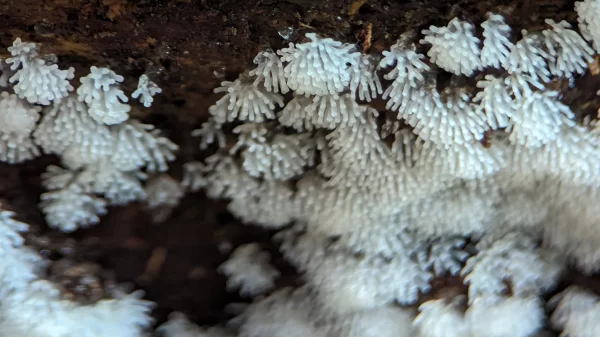
Strumpshaw Fen – 17th February 2024
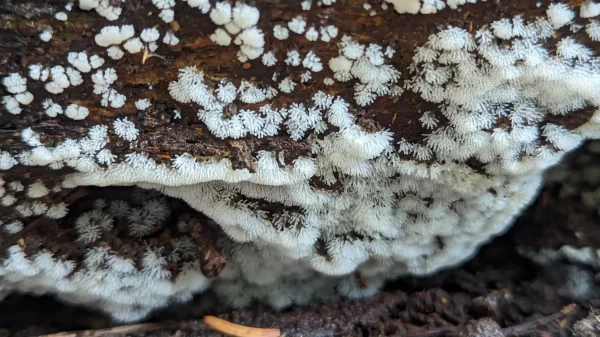
Strumpshaw Fen – 17th February 2024
And what I think could be some Mycena tenerrima — frosty bonnet — on a fallen piece of twig [1] [2].
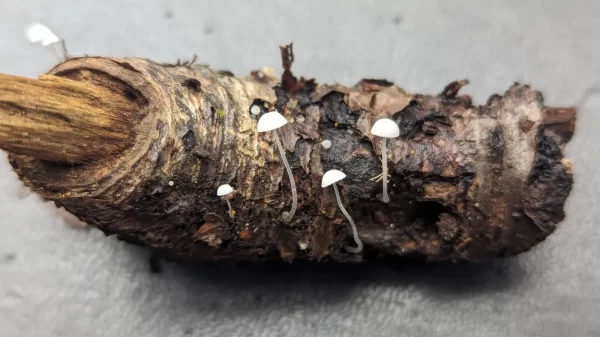
Strumpshaw Fen – 17th February 2024
In the photo below they do appear to have stems growing from a basal disc.
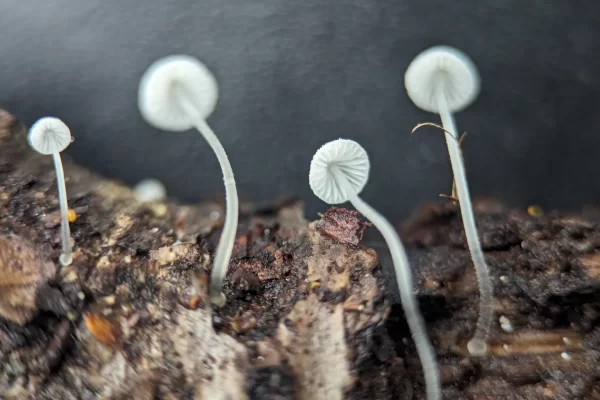
Strumpshaw Fen – 17th February 2024
In the photo below you can perhaps make out a dusting of sugar-like granules on the pileus.
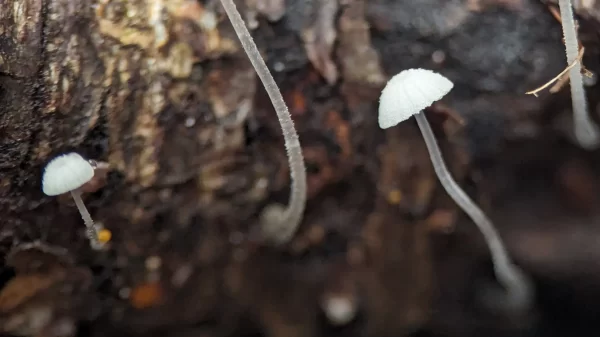
Strumpshaw Fen – 17th February 2024
We found a small cup fungi — after a frustrating Google image search, could this be a Haw Goblet — Monilinia johnsonii ?
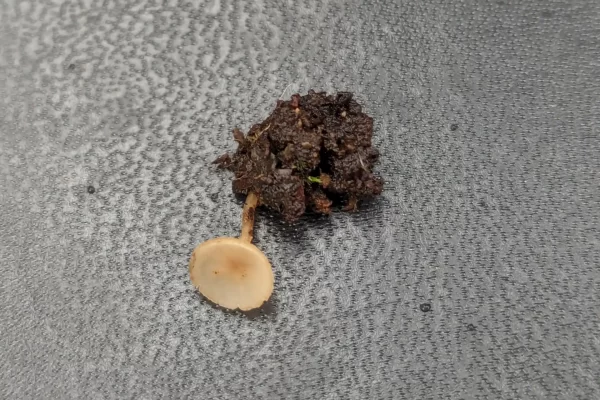
Strumpshaw Fen – 17th February 2024
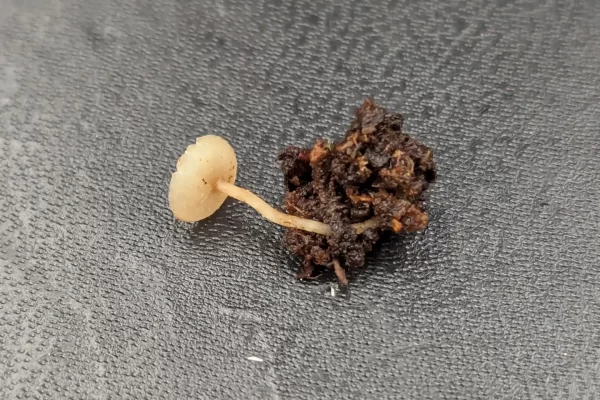
Strumpshaw Fen – 17th February 2024
At the end of the month, past The Outpost we stumbled upon these wonderful and delicate sporophytes with translucent setae.

Strumpshaw Fen – 25th February 2024
I’m calling it Lophocolea heterophylla (Variable-leaved Crestwort) rather than Lophocolea bidentata (Bifid Crestwort) — although it was found on rotting logs, the British Bryological Society states that L. bidentata is usually found on soil [3] and in eastern England is often restricted to shaded grassland [4].
If we had known, we could have identified the crestwort by it’s leaf shape — L. heterophylla has a variable leaf shape whereas
L. bidentata’s is bidentata.
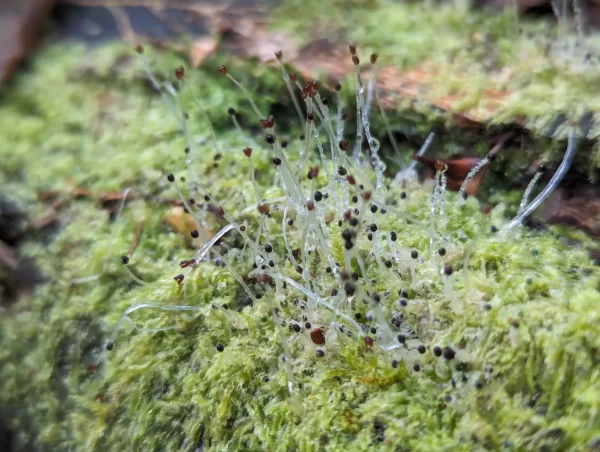
Strumpshaw Fen – 25th February 2024
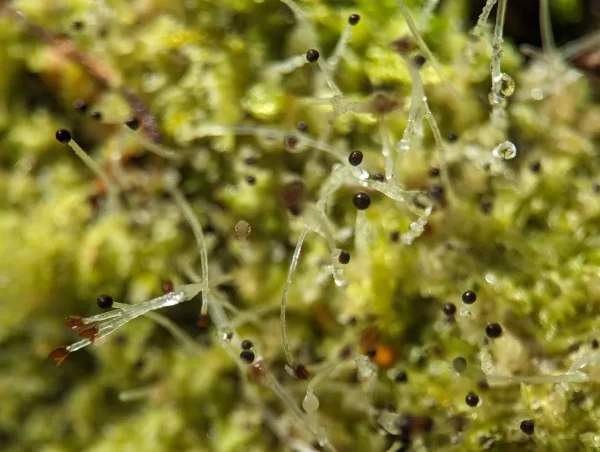
Strumpshaw Fen – 25th February 2024
In the following photo a spore capsule is beginning to open.
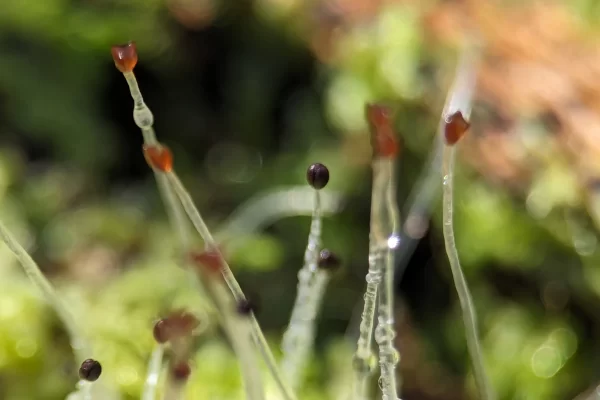
Strumpshaw Fen – 25th February 2024
In the photo below one of the capsules has fully opened in a beautiful cross shape — or to quote UBC’s Introduction to Bryophytes, the capsule has opened “via four lines of dehiscence to release spores” [5].
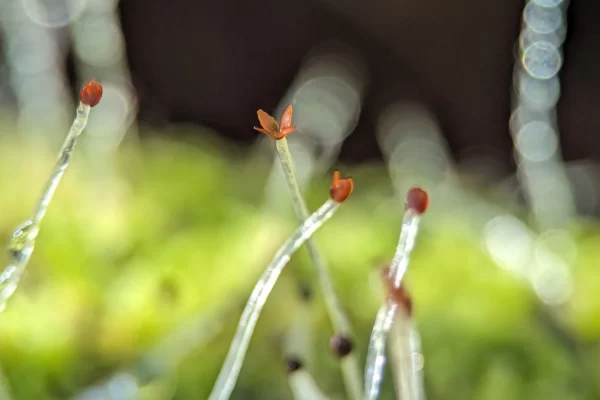
Strumpshaw Fen – 25th February 2024
Resources:
[1] Mycena tenerrima at The Mycenas Of Northern Europe website
[2] Frosty bonnet – Mycena tenerrima at woodlands.co.uk blog
[3] Moss Growers Handbook by Michael Fletcher via the British Bryological Society website.
[4] Lophocolea bidentata – British Bryological Society
Lophocolea heterophylla – British Bryological Society
[5] Introduction to Bryophytes – University of British Columbia
Roger Phillips – Grasses, Ferns, Mosses & Lichens of Great Britain and Ireland